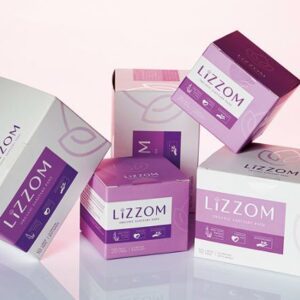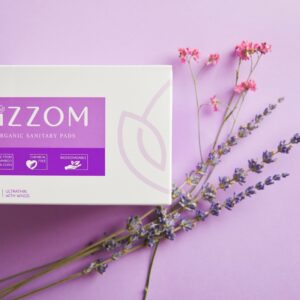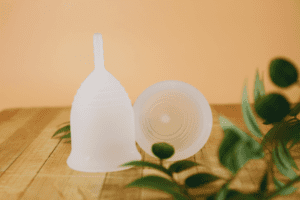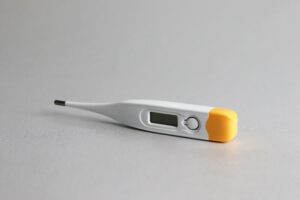What Type of Sanitary Products is Right for me?


From the time that a female starts her periods when she enters puberty until she reaches menopause and stops having periods, menstrual hygiene will become something that she has to carefully consider. Most women menstruate for about 40 years and regular periods are a good indicator that a female is reproductively healthy. Although, unfortunately there are exceptions to this, for example women with endometriosis often have periods that appear normal.
As menstruation is such a fundamental part of being a woman of reproductive age, taking the time to explore and sample the available sanitary products can help make periods more manageable. Deciding on which sanitary products to use can be influenced by a range of factors, including:
- Cost
- Environmental impact
- How often the product will need changing throughout the day
- Local availability
- Heaviness of flow
- Personal preference and/or recommendations by friends and family.
The range of sanitary products available today means that the majority of women are able to manage their periods safely, comfortably and with dignity; in contrast to days gone by when old rags and sheep wool were commonly used to soak up menstrual blood.
Sanitary pads
A common choice for girls who have only just started their periods. Sanitary pads are also known as sanitary napkins and sanitary towels. They are narrow pieces of absorbent material that fit directly into the underwear. Easy to use and change, they are available in different absorbencies to suit differing flow rates and times of the day. Some have wings attached to help secure them in place and reduce the risk of stains or leaks.
Disposable sanitary pads were first used in the early 1920s, they gave women the opportunity to manage their periods discreetly, as there was no longer the need to wash and dry the bulky homemade versions publicly. Now, with advancements in manufacturing and material availability and a general public who are becoming increasingly environmentally driven, there is renewed demand for reusable sanitary pads, to avoid the high plastic wastage that comes from most disposable variants.
Reusable sanitary pads are made from new or old materials such as sheets, pillow cases, and towels. They are made from pure cotton, as it is the best material for absorbing and also the most comfortable to wear.
Tampons
Often preferred over sanitary pads by dancers, athletes and swimmers, tampons are worn internally. A simple concept, they are devised of a wad of cotton attached to a string. Some come with a plastic applicator for ease of insertion. Once inserted into the vagina, they expand slightly to absorb menstrual blood. They will typically need changing every 4 to 6 hours and, as such, are not ideal for wearing overnight. In the 1980s, an association between tampon use and Toxic Shock Syndrome (TSS) was reported. Whilst the overall risk of developing TSS remained very low, the link between it and tampon use was enough to put some women off using them for prolonged periods of time. Like disposable pads, tampons incur significant plastic waste and many women today strive for alternatives that are more environmentally friendly.
Menstrual cups and disks
A menstrual cup is a reusable hygiene product. The cup is made from medical-grade rubber or silicone, it is small and funnel-shaped and is inserted into the vagina, where it forms a seal and collects menstrual blood. There are disposable menstrual cups, but it is the reusable ones that have really been growing in popularity in recent years. The menstrual cup holds up to 38 ml fluid, meaning it requires changing less often than a sanitary pad or tampon; it also has fewer of the negative associations with TSS that tampons have. Whilst it can take a few attempts to master the art of insertion, leakage rates are low once the cup is in position. Reusable menstrual cups should be washed and wiped clean before each use and sterilised at the end of your period. Modern menstrual cups are very durable and can last for up to 10 years with proper care.
Menstrual disks and cups are similar as both are inserted into the vagina and both collect blood rather than absorbing it. Disks typically sit higher up, where the vagina meets the cervix (the vagina fornix). Unlike cups, disks are usually not reusable and will need to be discarded after use. They can also be slightly messier to remove than cups.
Advantages of menstrual cups and disks
- They are affordable.
- Potentially safer than tampons
- Hold more blood than other sanitary products, meaning you can go longer without changing them or emptying them.
- The reusable varieties are more eco-friendly than disposable pads or tampons.
Disadvantages of menstrual cups and disks
- Emptying them can be messy.
- In very rare cases, may cause an allergic reaction. However, most modern varieties are made from hypoallergenic materials.
- Vaginal irritation, particularly if not accurately inserted.
- Hard to remove or insert.
Period pants
Period underwear (period pants) are a relatively new addition to the portfolio of sanitary products. These are more like normal underwear, except that they have additional layers of material built in to absorb any period blood. There are different types of pants available for light, medium, and heavy flow days. They can be worn alone, or as a back-up alongside tampons or menstrual cups. Fully reusable, they are another of the more environmentally-friendly options and, because there is no need for any internal insertion, they are a good option for those who are hesitant to use tampons, cups or disks. These special pants can also provide welcome relief for those who experience urinary incontinence.
In conclusion, there are now a large selection of products that allow you to go about your normal life whilst on your period each month. Selecting the right product will minimise the risk of leaking, discomfort, embarrassment and inconvenience.
Consider a women health test to learn more on your health.
Nabta is reshaping women’s healthcare. We support women with their personal health journeys, from everyday wellbeing to the uniquely female experiences of fertility, pregnancy, and menopause.
Get in touch if you have any questions about this article or any aspect of women’s health. We’re here for you.
Sources:
- Eijk, Anna Maria Van, et al. “Menstrual Cup Use, Leakage, Acceptability, Safety, and Availability: a Systematic Review and Meta-Analysis.” The Lancet Public Health, vol. 4, no. 8, 1 Aug. 2019, pp. E376–E393., doi:10.1016/s2468-2667(19)30111-2.
- Hajjeh, Rana A., et al. “Toxic Shock Syndrome in the United States: Surveillance Update, 1979–19961.” Emerging Infectious Diseases, vol. 5, no. 6, 1999, pp. 807–810., doi:10.3201/eid0506.990611.
- “How Tampons and Pads Became so Unsustainable.” National Geographic, 18 Oct. 2019, www.nationalgeographic.com/environment/2019/09/how-tampons-pads-became-unsustainable-story-of-plastic/.
- “Menstrual Cups vs. Tampons: Things You Might Not Know.” Mayo Clinic, Mayo Foundation for Medical Education and Research, newsnetwork.mayoclinic.org/discussion/menstrual-cups-vs-tampons-things-you-might-not-know-about-the-cup/.
- “Tired of Tampons? Here Are Pros and Cons of Menstrual Cups.” Health Essentials from Cleveland Clinic, Health Essentials from Cleveland Clinic, 15 Nov. 2019, health.clevelandclinic.org/tired-of-tampons-here-are-pros-and-cons-of-menstrual-cups/.












































